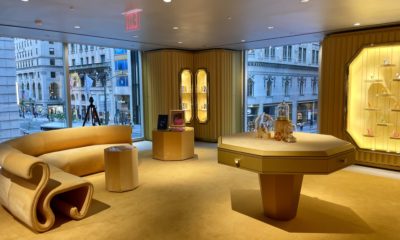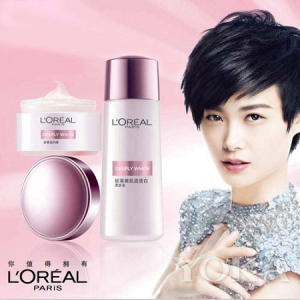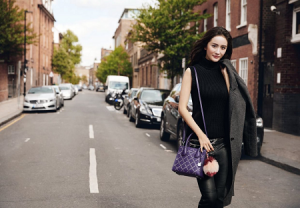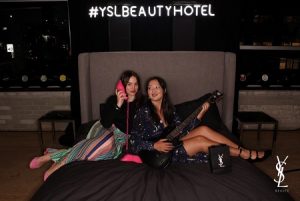So much goes into having a strong brand identity. While the physical product being sold needs to be good quality, and the store design in which the product is sold has to be inviting, there is still more that goes into establishing a strong brand identity. Past trends include inviting the media and celebrities to opening ceremonies to create some buzz and drive traffic to a new store. However, this habit has changed in the recent years, nowadays brands such as Valentino, Moynat, and Gentle Monster have realized that influencers need to be part of their O2O marketing and PR mix. KOLs are influencers that share their feelings towards specific brands. Where does their credibility come from? They have direct experience in an industry, professional qualifications or spent a lot of time engaged on a certain subject. Connecting with their audience is just one advantage, however the biggest plus they have is a specific target demographic. Brands can recognize KOLs that target similar demographic markets and have them share their thoughts about their brand. It is important to understand exactly who KOLs are and how to optimize using one within a brand.
The Need for a KOL:
In the Chinese market, consumers are more likely to turn to social media first before they end up buying a product. They check recommendations on the Xiaohongshu or videos on Douyin. Chinese consumers value what their friends, family, and KOLs have to say about various products. More than 50% of Chinese consumers are loyal to brands that partner with celebrities or social influencers. The biggest platform for social influencers is Weibo. With its 462 million users it has an immeasurable potential.
“Is KOL marketing worth the money in China?”
Advertisement
Finding Your KOL:
The first step in optimizing the use of a KOL is finding one that is appropriate for your specific brand and target market. When looking for the perfect match numbers aren’t the most important, a micro-influencer with a few thousand followers can have a greater influence than someone with 500,000 followers. A KOL that has a strong reputation will be more beneficial to the company and add more value to the brand. For example, L’Oréal’s KOL needed to be someone that would be relatable to affluent women that use beauty products. Thus, L’Oréal chose the popstar Li Yuchun as a KOL to promote a new lotion being sold. She brought awareness about the product to her fan base and helped promote the product in a successful way. When Meipai hosted a Cannes Film Festival live-stream where Li Yuchun promoted a L’ Oréal lip balm to the 3.1 million viewer audience, the lip balm was sold out a few hours later.
Cai Xukun, a prominent Chinese singer, also appeared as the spokesman of L’Oréal. 1 minute after the launch of their new product, L’Oréal’s Youth Code, 28 thousand bottles were sold and 2 weeks later it was out of stock, achieving a 25.8 million RMB sales record.
“Savvy Social Networking Pays Off for L’Oreal China”
Advertisement
Another outstanding example of KOL success is the first collaboration of Cai Xukun (KUN) with Yoseido. The brand was a little-known cosmetic brand and ended up making a fortune from picking KUN as brand ambassador. After announcing the collaboration, their sales of facial masks reached 2 million RMB just in one afternoon and have now reached over 10 million RMB in total.
KOLs in Stores:
Once a brand has established who they want their KOL to be, they need to consider how to partner with their KOL to make engaging content. Sometimes they will record videos discussing how to use a product, or of them wearing the product. Another way to create engaging content for KOLs is to invite them to show up at premiere events showcasing new arrivals. The notable KOL Yang Mi who often will show up to luxury store openings. Yang Mi is a KOL for luxury stores like Burberry, Gucci, and Givenchy. Having a KOL at a store opening or fashion show seen wearing the brand will bring more awareness to the products and brand itself.
“Interview with Yang Mi, Michael Kors’ New Brand Ambassador”
KOLs are often encouraged to live stream while they are at events to share their experience with their followers. App users spent more than “225 billion hours on apps” in 2017 alone, which shows how much they care about what is posted online (Mavsocial).
Advertisement
One of the best examples is the snack food brand Laiyifen. In 2016 they organized a 48-hour live-streaming relay race where they invited 15 internet celebrities who could reach 600,000 viewers. Before and during the event the influencers shared the event location with their followers. In addition they offered them exclusive discounts if they visited the stores during this 2-day period of live-stream. The stores’ traffic and earnings increased by five times in those 2 days alone. They went even bigger in 2017 when they invited 40 live-streamers and introduce over 1,000 snacks. #1000snacksnight generated 130 million views and 730,000 discussions on Weibo.
Another successful brand campaign using KOLs was the YSL traveling beauty hotel in Shanghai. The aim of the hotel was to create interactive selfie-friendly rooms where KOL’s could “check in”, take unique photos, enjoy exclusive makeup tutorials and performances. On Weibo alone #YSLBEAUTYHOTEL has more than 150 million views and 300,000 comments.
“What They Wore: YSL Beauty Hotel Party”
Overall, the use of KOLs is increasing for brands now more than ever before, especially within the Chinese market. Luxury brands need to focus their efforts on finding a KOL that supports their company and brand identity. Since Chinese consumers spend the most time on social media than any other country, and they value what information is shared on social media, it is essential to partner with KOLs to increase awareness and provide engaging content for both new and old brands.


 Headlines2 weeks ago
Headlines2 weeks ago
 Headlines2 weeks ago
Headlines2 weeks ago
 Headlines2 weeks ago
Headlines2 weeks ago
 Headlines6 days ago
Headlines6 days ago
 Eric Feigenbaum5 days ago
Eric Feigenbaum5 days ago
 Headlines1 week ago
Headlines1 week ago
 Designer Dozen1 week ago
Designer Dozen1 week ago
























